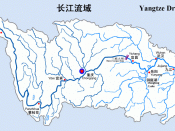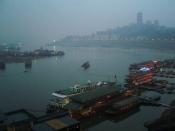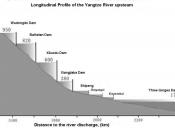I. Overview of Case and Analytic Approach
Did you know that the Three Gorges Dam (TGD) is projected to be the world's largest dam? It will be nearly four times larger than the Hoover Dam, with a height of 607 feet (185 meters) and a length of about 1.4 miles (Kosowatz, 1999). Using a political ecology approach, an explanation of the social and environmental impacts and outcomes of the Three Gorges Dam project (TGDP) will be provided. I will first introduce the reader to the setting, situation, and problem. The TGDP is located almost 750 miles south of Beijing and 650 miles west of Shanghai, China. In 1994, construction began on the TGD in Sandouping Village, Yichang County, in the Hubei Province. The TGDP site was selected at Sandouping, along the Yangtze River, after about 15 other sites were studied, for construction of the main Xiling Gorge. The river valley at the construction site of the TGDP is "relatively open and broad, with the hills on both sides of the river fairly flat" (Chinagate, 2005), providing a good-size lake right at the upstream of the dam.
As well, the small islet of Zhongbaodao near the right hand side bank of the Yangtze River will be helpful for the river diversion project. Apart from the Xiling gorge, two other gorges will be constructed further west of the Yangtze River, called the Qutang and Wuxia gorges. When it is fully completed in 2009, Qing (1998) proclaims that the TGD "will be the largest [hydroelectic] dam ever built, [creating] a 600 kilometer long reservoir" (4). Clearly, the region around these three gorges will be one of the world's most famous scenic sites.
In this paper, I will examine the problems of human-induced degradation in the region due to the TGDP. Specifically, I will...


